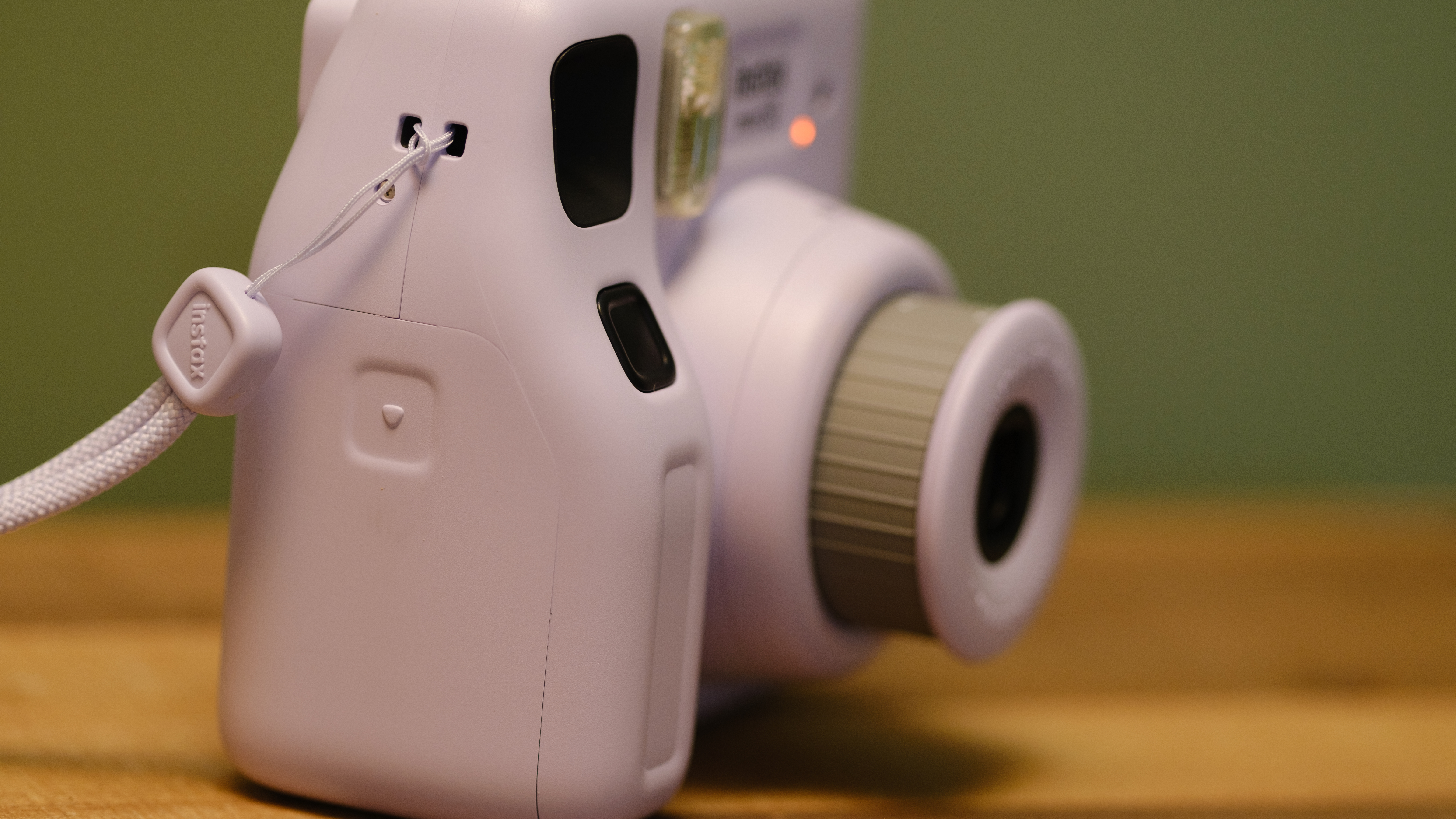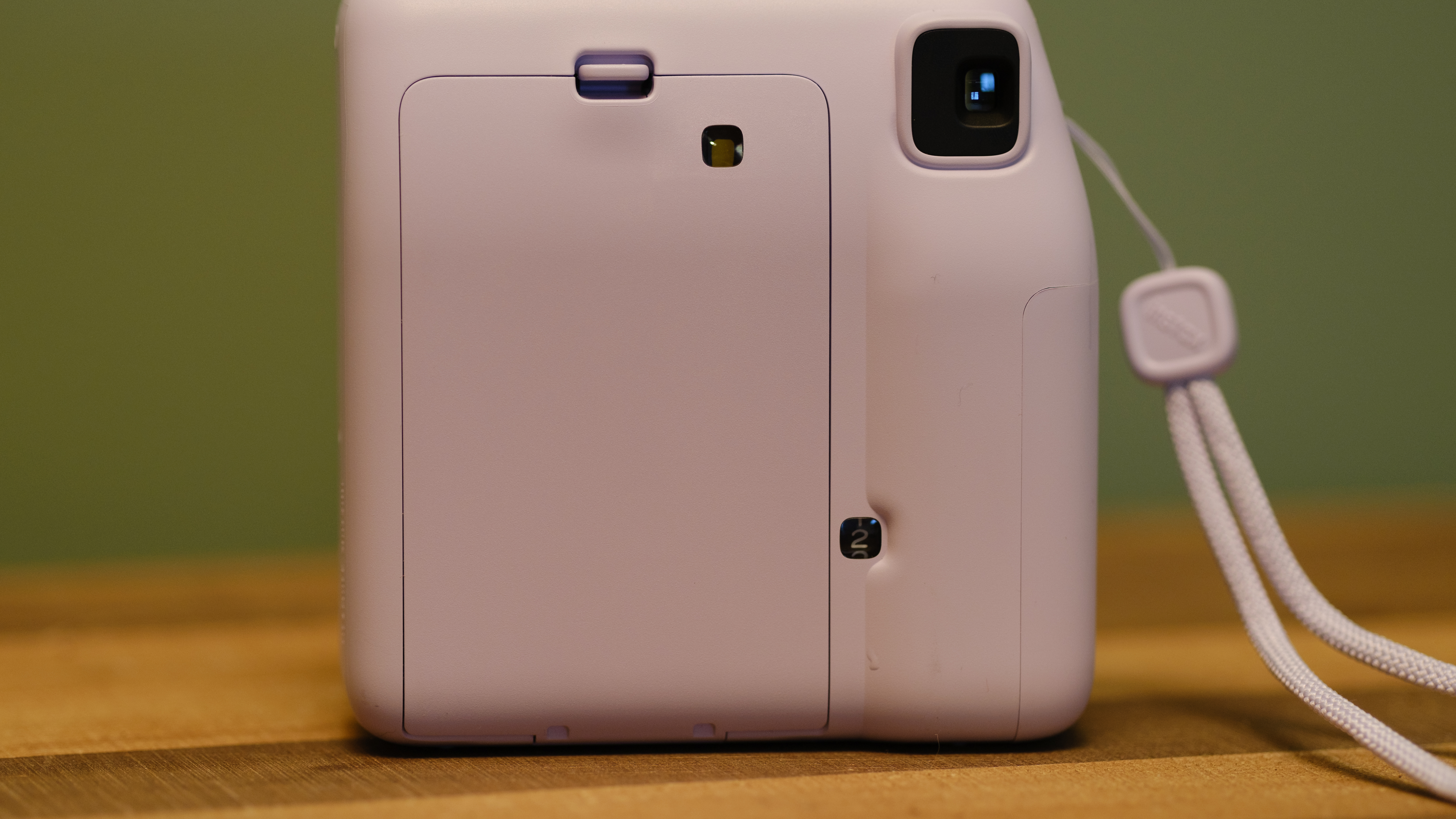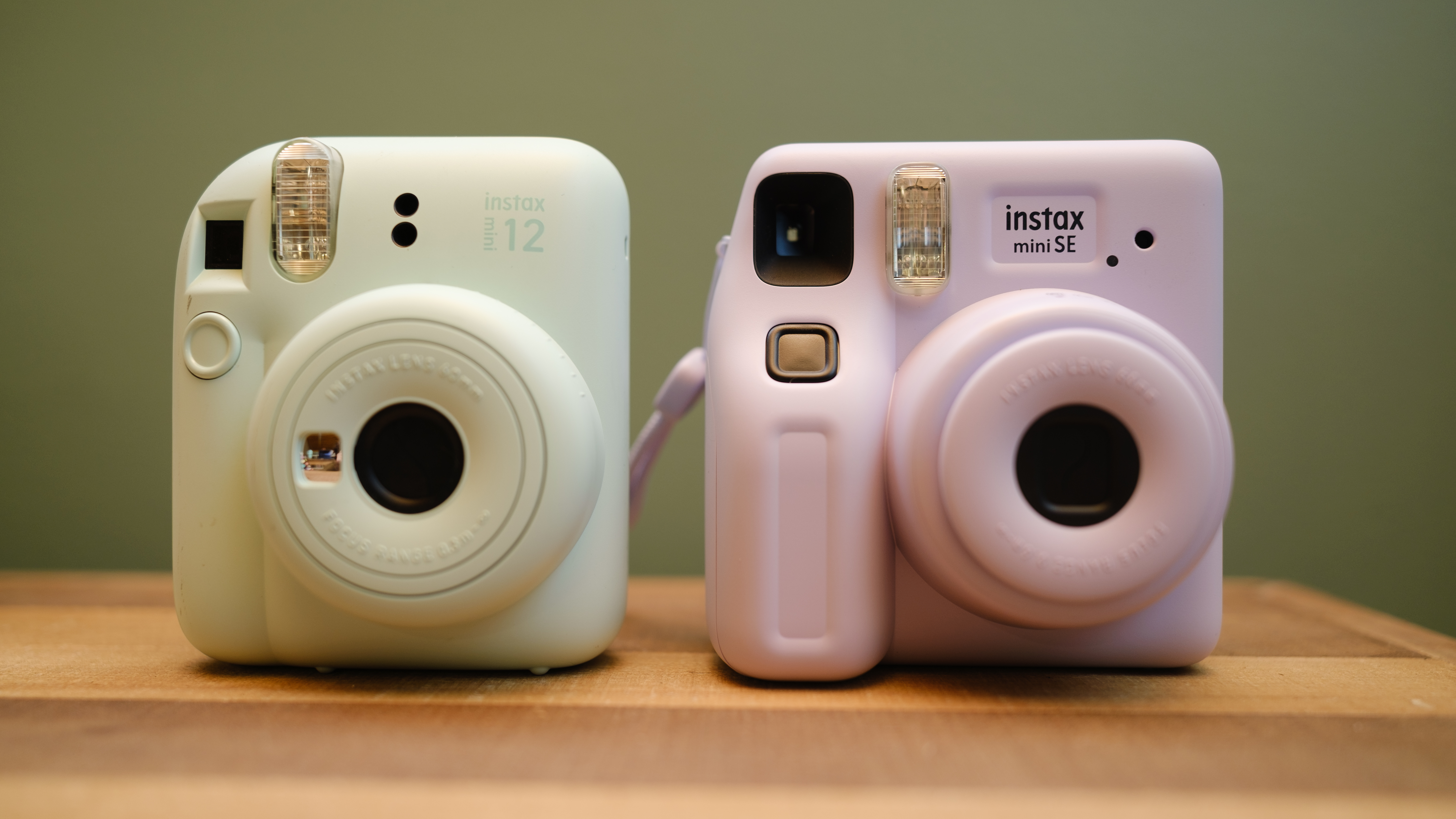Digital Camera World Verdict
The Instax Mini SE is an incredibly affordable instant film camera that delivers charming retro prints. While its pricier sibling is slightly easier to use, some will find the ability to control the brightness a perk rather than a downside. The Mini SE has its limitations, like a fixed shutter speed, but it’s a charming camera for $67.
Pros
- +
Brightness control adjustments
- +
Incredibly affordable
- +
Nice, beefy grip
Cons
- -
Fixed 1/60 shutter speed
- -
No fully auto exposure mode
- -
Requires four AA batteries
Why you can trust Digital Camera World
If you browse the Instax website, the most affordable analog camera option listed is the Instax Mini 12. But Fujifilm has a secret, more budget-friendly instant camera: The Instax Mini SE. Because the Instax Mini SE is a Walmart-exclusive camera, you won’t find it on Instax’s list of analog cameras or while browsing Amazon. But, the Instax Mini SE not only sits at a lower price point than the Mini 12 but offers a little more control over the final exposure.
The Instax Mini SE lacks the selfie mirror and fully automatic design of the Instax Mini 12. But the twistable brightness control grabbed my attention, as well as the larger grip. Could a $67 camera actually have more controls than a $79 one? I blasted through a pack of Instax film to see whether Instax’s cheapest camera is even worth buying. And while more advanced options like the Instax Mini Evo or the Mini 99 still sit among the best instant film cameras, the Mini SE has a lot to offer for the price.
Instax Mini SE: Specifications
| Film type | Fujifilm Instax Mini |
| Film size | 62 mm x 46 mm picture on a 86 mm x 54 mm print |
| Developing time | Approximately 90 seconds |
| Viewfinder | .04x with target spot |
| Lens | 2 components with 2 elements, 60mm |
| Lens shooting range | 23.6 inches (0.6m) and beyond |
| Shutter speed | 1/60th second |
| Flash | Constant |
| Flash range | 23.6 inches (.6m) to 7.2 feet (22m) |
| Battery | Four AA alkaline batteries |
Instax Mini SE: Price
The Instax Mini SE retails for $79 / £80 /AU$129, leaving little room for complaint. Unless, of course, you are complaining about the cost of Instax Mini film, which starts at around $9 / £10 / AU$20 for a pack of 10 exposures, depending on what border style you pick and whether you pick up a single or a multipack.
Instax Mini SE: Design & Handling

Film loads through a door at the back of the Instax Mini SE. Like with other Instax cameras that I’ve used, loading the film is nearly foolproof, as you simply need to line the yellow dot on the cartridge with the yellow inside the camera. A small window shows the number of shots remaining on the roll.
The camera powers on by pulling the lens out. Also wrapped around the lens is the brightness control. Icons for different lighting scenarios illustrate conditions from indoors to bright sun. As the lens twists around the brightness control, I can see the aperture actually changing at the front of the lens to accommodate the different lighting situation.





The shutter release sits at the top of the grip, rather than the top of the camera. Four AA batteries load through a door at the side. The camera doesn’t have any sort of tripod mount, but it's unnecessary as the camera uses a fixed 1/60th shutter speed with no option to vary that speed.
Surprisingly, I liked the ergonomics of the more affordable Instax Mini SE over the Instax Mini 12. That’s because the SE has a bit more of a grip to it. Granted, that does make the camera a bit larger. But, it's comfortable to hold and the grip keeps even gloved fingers away from the lens.
That’s an important feature as the viewfinder shows an approximation rather than what the lens really sees, so if you do have a finger covering the lens you won’t see it through the viewfinder. The viewfinder is a simple .4x approximation, which isn’t terribly surprising coming from a camera at this price point. But beware that the edges of the photo may not line up perfectly with what you saw in the viewfinder.
Unsurprisingly, the $67 camera has a plastic build. That’s to be expected for the price point. It’s also a bit bulky, but again, that’s not exactly unexpected. I did appreciate that the camera has a built-in lens cap that protects the lens whenever the camera is powered off.
The most annoying part? It comes sealed in plastic blister packaging, which is highly irritating to cut through. At least that's a temporary annoyance only when unboxing.
Instax Mini SE: Performance

Instax Mini creates credit-card-sized snapshots that aren’t supposed to be perfect. Instead, they are loved for the quirky vintage feel. That only makes limiting what you spend on an Instax Mini camera make even more sense. After all, why drop a lot of money on something that’s supposed to be imperfect?
I’ve tried nearly every Instax Mini camera that Fujifilm currently sells (the notable exception being the Instax Mini 40). The Instax Mini SE delivers the retro fun instant film prints that I’ve come to expect from Instax. You can’t turn the flash off, but in many scenarios, that direct flash look adds to the retro charm.




Oddly enough, the Mini SE has a control that the Mini 12 doesn’t: Brightness control. By twisting the setting around the lens, I could adjust from shooting indoors to working in bright sun. As I twist the brightness control, I can see the camera swapping out different aperture openings on the lens. That offers a little more control if you want to intentionally make the image lighter or darker. While I liked the added control, if you just want a point-and-shoot where you don’t have to remember to change a setting with each shot, then the feature would be a downside rather than a perk.
While I liked being able to adjust the aperture, the Mini SE does have some problems with both the lightest and darkest shooting scenarios. The Mini 12 does a bit better at getting the exposure right because the auto mode will select from multiple shutter speeds. The Mini SE, on the other hand, only shoots at 1/60th second. When I shot a snowy scene with both the Mini SE and the Mini 12, I did prefer the 12's image, which got the better exposure of the two.
I was surprised that the Mini SE managed to take some decent shots while touring Christmas lights. But, that was only when everything was within a few feet of the camera. People and objects too far to be properly lit by the flash turned out far too dark.
Outside on a sunny day, I had a bit of the opposite problem. The Mini SE did okay when directed away from the sun. But, include the sun in the shot and it will turn the sun into a green and black UFO. It also has a tendency to overexpose white on a sunny day, from a basketball backboard to snow on the ground.
That’s all par for the course for a cheap instant film camera, however. Recognize what the camera can and can’t do and you’ll like a majority of the shots that the camera spits out.
After snapping the photo, the instant print will spit out from the top. The image takes around 90 seconds to develop and you don’t need to shake it or keep it in the dark while it develops.
While the Mini SE is fully analog, if you want to share your prints online, the Instax UP! is a mobile smartphone scanning app designed specifically for Instax film. It will digitize those prints, along with saving them all in one place. Essentially, it just takes a picture of your instant picture, but it can be a helpful feature.
Instax Mini SE Vs. Instax Mini 12

The Instax Mini SE compares closely to the Instax Mini 12. However, the Mini SE isn’t fully auto like the Mini 12 – you have to remember to change the aperture at the front. For some, that may actually be a great feature, but if you just want to point, then shoot without adjusting any settings, then the Mini 12 is the better choice.
The Mini 12 has fully automatic exposure and can automatically adjust the shutter speed for the light, where the SE can only shoot at one fixed shutter speed. With the SE, you’ll need to remember to adjust the aperture. The Mini 12 got the exposure right more often in side-by-side tests, so with the cost of film, the potential for wasted shots may mean the Mini 12 is the better choice.

The Mini SE has a few other small differences compared to the slightly more expensive 12. It takes four AA batteries rather than two. The SE is a bit bulkier but also has a nicer grip. It also lacks the selfie mirror that the Mini 12 has.
Overall, if you want the simplest camera to use, get the Mini 12. If you want a bit more control but can’t afford the Instax Mini 99, which also has features like double exposures and bulb mode, the Mini SE will at least offer some aperture flexibility.
Instax Mini SE: Verdict

Instant film isn’t meant to be perfect – so why drop a lot of money on a camera that doesn’t need to live up to high standards? The Instax Mini SE is an incredibly affordable instant film camera. The feature list is limited, but unlike the Mini 12, you can adjust the aperture to control how light or dark the image is.
While more affordable, the Mini SE is slightly more challenging to use because you have to remember to adjust the brightness control on the front. It also has a tendency to overexpose in bright sun because its limited to a single fixed shutter speed. I also think serious photographers are going to want the features like true exposure compensation and double exposures found on the Instax 99.
But, when it comes to getting quirky retro photos for a rock bottom price point, the Instax Mini SE delivers. Buy it if you want an affordable instant film camera and don’t mind adjusting the brightness level.
Don’t buy it if you want a fully automatic camera. You should also skip it if you want features like double exposures and bulb mode.
| Features | The Mini SE has brightness control, a simple design, and an affordable price. | ★★★★☆ |
| Design | The Mini SE is a bit bulky, but the grip is comfortable. | ★★★★☆ |
| Performance | The set shutter speed means it's not great for outdoors, but the flash was surprisingly good. | ★★★☆☆ |
| Value | The Mini SE is very affordable, just keep in mind the cost of film packs. | ★★★★☆ |
✅ Buy it...
- If you want an affordable film camera with some exposure control
- If you want an affordable retro instant camera
🚫 Don't buy it...
- You want a fully automatic camera
- You want the most accurate exposure with minimal effort
Alternatives

The Instax Mini 12 is easier to use than the SE because it has fully automatic exposure. It also needs fewer batteries and has a mirror at the front for snapping selfies. But it is more expensive and doesn’t offer the brightness control.
The Instax Mini 99 is a fully analog camera that gives photographers a much longer list of controls. It offers exposure compensation, double exposures, bulb mode, and unique color effects using built-in LEDs to add a touch of color to the final exposure. However, it costs far more at $200.
You may also like
For more instant film inspiration, browse our top picks for the best instant film cameras, or dive deep into the best film cameras.

With more than a decade of experience reviewing and writing about cameras and technology, Hillary K. Grigonis leads the US coverage for Digital Camera World. Her work has appeared in Business Insider, Digital Trends, Pocket-lint, Rangefinder, The Phoblographer and more.



